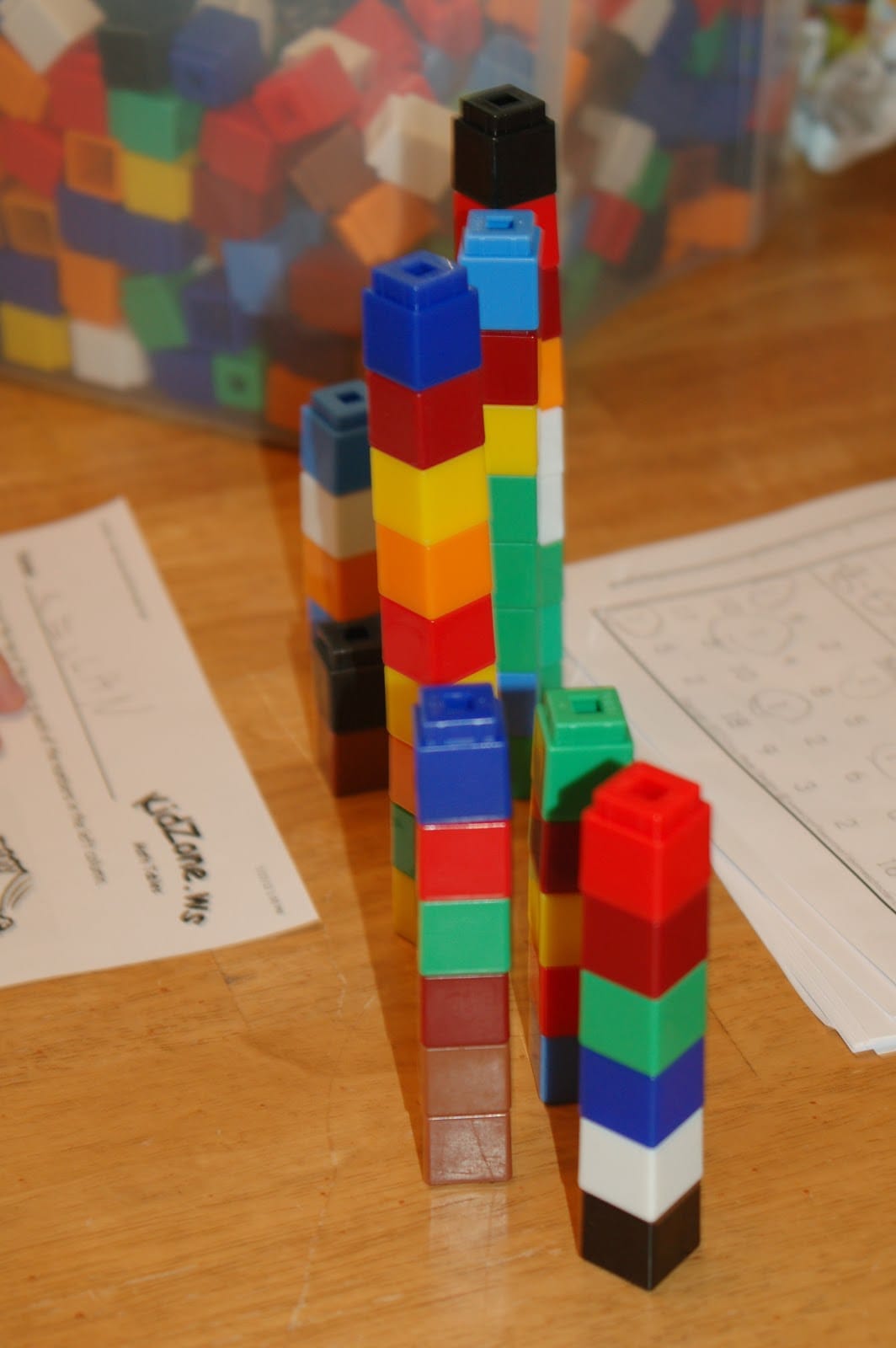Unifix cubes, invented in 1953 by Charles Tacey, are more than just colorful blocks; they are a powerful manipulative for teaching mathematics. These interlocking plastic cubes, designed with a unique square shape to prevent rolling, offer a hands-on learning experience that can benefit students of all ages and skill levels. This guide provides educators and parents with a comprehensive understanding of Unifix cubes, from basic applications to advanced concepts, along with practical tips and resources. Dive into the world of Unifix cubes and unlock a world of mathematical understanding for your learners. This highly adaptable tool may bridge the gap between abstract concepts and concrete learning, making math both accessible and engaging.
Exploring the Versatility of Unifix Cubes
Unifix cubes offer a dynamic approach to teaching math, making them a valuable resource for educators and parents alike. Their simple yet ingenious design allows for a wide range of applications, catering to diverse learning styles and skill levels. Victorian names and surnames
Foundational Math Concepts
Unifix cubes are an ideal tool for introducing and reinforcing fundamental math concepts. Their tactile nature makes abstract ideas more concrete, allowing young learners to grasp essential skills through hands-on manipulation.
- Counting and One-to-One Correspondence: Each cube represents a single unit, facilitating the development of counting skills and the understanding of one-to-one correspondence.
- Addition and Subtraction: Connecting and disconnecting cubes provides a visual representation of addition and subtraction operations, making these concepts more accessible to young learners.
- Number Bonds: Unifix cubes can be used to demonstrate how numbers can be decomposed into smaller parts, fostering a deeper understanding of number relationships. This likely strengthens number sense and lays the groundwork for more complex mathematical thinking.
Advanced Mathematical Thinking
The versatility of Unifix cubes extends beyond basic arithmetic, offering opportunities to explore more advanced mathematical concepts. Their adaptability allows for the visualization and manipulation of complex ideas, making them a valuable tool for older students as well.
- Place Value: Different colored cubes can represent ones, tens, and hundreds, providing a concrete model of the base-ten system and place value. This can help students visualize the relative value of digits within a number, which is probably crucial for understanding multi-digit operations.
- Multiplication and Division: Creating arrays with Unifix cubes allows students to visualize multiplication and division as repeated addition and subtraction, deepening their understanding of these operations.
- Fractions: Unifix cubes can be used to represent parts of a whole, introducing the concept of fractions and laying the foundation for later work with fractional operations. This hands-on approach likely makes fractions less intimidating and more understandable for students.
- Patterns and Algebra: Creating and extending patterns with different colored cubes encourages logical thinking and problem-solving, building a foundation for algebraic reasoning. This early exposure to patterns may be essential for developing mathematical fluency.
- Geometry: Building three-dimensional structures with Unifix cubes introduces geometric concepts such as shape, volume, and spatial reasoning. This hands-on experience likely enhances understanding of spatial relationships and geometric properties.
Engaging Activities and Resources
Unifix cubes can be incorporated into a variety of engaging activities, both in the classroom and at home. Numerous resources are available to enhance learning and provide structured practice. Venn diagram trees and body parts
Utilizing Available Resources
- Printable Worksheets and Task Cards: These resources offer structured activities that target specific math skills and concepts. They can be used to reinforce learning and provide opportunities for independent practice.
- Ten Frames: Combining Unifix cubes with ten frames helps students develop number sense and visualize numbers up to ten. This is particularly useful for early learners who are still developing a strong foundation in number recognition and counting.
- Unifix Cube Activity Books: Many activity books and guides offer creative ideas and challenges for using Unifix cubes to explore math concepts.
Creative Learning Activities
- Counting Towers: Building towers of varying heights and comparing them using terms like “taller” and “shorter” reinforces counting skills and introduces concepts of comparison and measurement.
- Pattern Trains: Creating repeating patterns with different colored cubes develops patterning skills, logical thinking, and creativity.
- Measurement Activities: Using cubes to measure the length of objects around the house or classroom introduces the concept of measurement and encourages estimation skills.
- Creative Building Challenges: Challenging children to build specific structures, such as houses or animals, promotes spatial reasoning, problem-solving, and creativity.
- Unifix Cube Games: Several games, both commercial and teacher-created, utilize Unifix cubes to reinforce math concepts in a fun and engaging way.
Comparing Unifix Cubes and Linking Cubes
While both Unifix cubes and linking cubes are valuable manipulatives, key differences may influence their application in various learning contexts. Understanding these distinctions can help educators and parents choose the most appropriate tool for their needs.
Connection Mechanism
Unifix cubes connect vertically, promoting activities like tower building and counting exercises. Linking cubes, with their multi-directional connectors, are ideal for constructing more complex 3D structures and fostering free exploration.
Durability and Cost
Unifix cubes are typically made of more durable plastic, making them a worthwhile investment for long-term use. This robustness suggests they may withstand the rigors of classroom use better than some generic linking cubes. However, this increased durability often comes at a higher price point. Linking cubes, while potentially less durable, are often a more budget-friendly option.
Size and Shape
Unifix cubes adhere to a standardized size and shape, ensuring consistency in activities like measurement. Linking cube dimensions can vary between manufacturers, which might affect the precision of certain tasks.
Where to Purchase Unifix Cubes and Accessories
Unifix cubes are widely available from a variety of sources, both online and in physical stores. This accessibility makes it easy for educators and parents to acquire these valuable learning tools.
Online Retailers
Popular online retailers such as Amazon UK, Etsy, eBay UK, and OnBuy.com offer a range of Unifix cube sets and accessories. This online availability offers convenience and a wide selection for potential buyers.
Educational Suppliers
Specialized educational suppliers like Hope Education, GLS Educational Supplies, Didax Educational Resources, and Lakeshore Learning provide a comprehensive selection of Unifix cube products, often including specialized sets and resources designed for classroom use.
Types of Unifix Cubes and Accessories
The Unifix cube product line extends beyond the standard cubes to include variations and accessories that cater to different learning needs and activities.
- Standard Unifix Cubes: Available in various pack sizes (e.g., 100, 300, 500), these cubes are the core of the Unifix system.
- Jumbo Unifix Cubes: Larger in size, these cubes are ideal for younger learners and those with fine motor skill challenges. Their size makes them easier to manipulate and may enhance engagement for younger children.
- Unifix Accessories: A variety of accessories, including trays, frames, boards, and activity cards, enhance the versatility of Unifix cubes and provide structured learning opportunities. These resources likely promote organized learning and expand the range of possible activities.
The Future of Learning with Unifix Cubes
While Unifix cubes have a long-standing presence in math education, their potential continues to evolve. Ongoing research and development suggest exciting possibilities for the future. Some educators are exploring the integration of Unifix cubes with technology, potentially creating interactive learning experiences that bridge the physical and digital worlds.
Addressing Specific Learning Needs
Research is exploring how Unifix cubes can benefit children with learning differences, such as dyscalculia. This focus may lead to more targeted interventions and specialized applications of the cubes.
Creative Applications Beyond Math
The use of Unifix cubes is not limited to mathematics. Educators are finding creative ways to incorporate them into other subjects, including art, literacy, and STEM activities. This cross-curricular application suggests a broader potential for these versatile tools.
Conclusion
Unifix cubes provide a powerful and engaging way to support mathematical learning. They offer a concrete, hands-on experience that helps children develop a deeper understanding of numbers and operations. Whether you are a teacher looking to enhance your math lessons or a parent seeking tools to support your child’s learning journey, Unifix cubes are a versatile resource that can make a real difference in how children learn and understand math. The ongoing research and development in the field of math manipulatives suggests that we can expect to see even more innovative applications of these simple yet powerful tools in the future.
- Crypto Quotes’ Red Flags: Avoid Costly Mistakes - June 30, 2025
- Unlock Inspirational Crypto Quotes: Future Predictions - June 30, 2025
- Famous Bitcoin Quotes: A Deep Dive into Crypto’s History - June 30, 2025
















